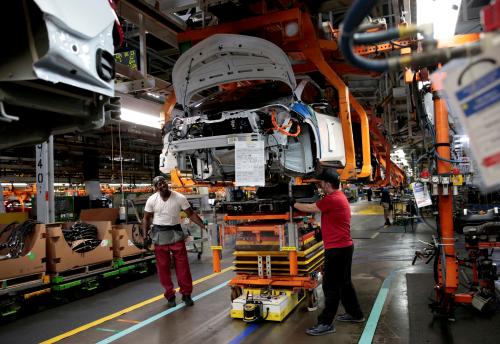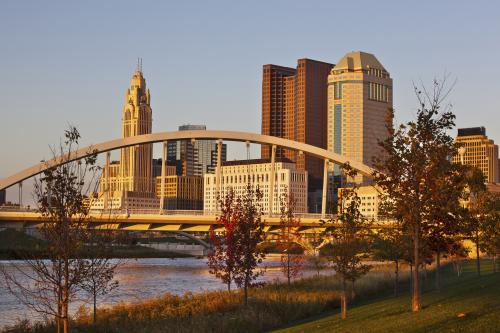The Brookings Institution’s Metro Freight series comes at a critical time for Greater Portland. As with most areas, we are dealing with a federal government that has skipped town, leaving our region to face an infrastructure gap of as much as $20 billion over the next few decades. Three years ago, our Metro Regional Government convened the Community Investment Initiative—a partnership of public, business, and community leaders—to address this gap in order to support living-wage jobs and generate economic prosperity. The challenge often comes in knowing where to begin.
The good news is that our region is already home to several growing industries with considerable strengths in the goods trade, including athletic and outdoor gear, green industries, and advanced manufacturing. For our businesses to continue to succeed, though, we need to ensure that our goods move efficiently to the right locations, as exemplified by our $11.6 billion surplus in electronics. This rationale, after all, helped lead to our trailblazing Freight Master Plan, which contains trade strategies that we can further refine and contextualize through the new Brookings data.
Much of this work begins with an understanding of our economic advantages. In this way, we can build off our efforts as one of the first metros to launch a regional export plan. In developing the export strategy, we came to understand that trade between markets is much more complex than national balance-of-trade figures would lead one to believe. Exporting is often the joint effort of many metros working together across markets, adding value multiple times before reaching a consumer market. Although most people would not immediately associate us with the aerospace industry, Greater Portland is a significant producer of component parts that ultimately find their way into Boeing and Airbus products.
The new Brookings data begins to show us how our economy connects with those of other U.S. and foreign metros through our manufactured goods, opening up new possibilities for collaboration based on supply chains of mutual interest. In a region dedicated to green growth, metropolitan trade balances also allow us to look more closely at the consumption side of the equation. For example, increasing energy efficiency, whether in commercial office buildings or commuter vehicles, can help us derive a greater benefit from the value added in the Portland region.
These new trade measures from Brookings also give us a better sense of our relative position in the global economy and what we need to do locally to remain competitive. We can use this metro-level data to target our infrastructure investments more efficiently and capture the greatest economic returns for our local economy. In this region, many of our highest-value industrial lands (home to companies such as Intel and SolarWorld) are also furthest from vital highway and port infrastructure, raising important questions about how we reduce congestion and plan for prosperity throughout the region.
Brookings’ introduction of a “metropolitan trade balance” reinforces this approach by showing us which industries are net wealth generators for our region, both domestically and internationally. By understanding what sectors are growing our jobs and raising incomes and what infrastructure delivery is critical for these goods, we can make informed metro-level decisions that deliver the highest value of return for each dollar invested.
In the current environment, metros are charting their own paths in the global economy. With this data, at least we now have a map.



Commentary
Portland’s Evolving Role in Global Goods Trade
January 14, 2014